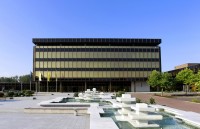Am 24. Januar 1984 führte Apple den Macintosh ein. Der "Mac" brach mit allem, was bis dahin für PCs als gegeben galt. Jef Raskin, der Vater des Mac, hatte eine Grundidee, als er das Projekt 1979 vorschlug: Einen Computer, der sich am Menschen orientiert.
Der Mac brachte dem normalen Anwender die grafische Benutzeroberfläche mit Desktop, Maus und Fenstern. Man konnte ihn auspacken, anschalten und benutzen.
Im Büro setzte der Mac sich gegen IBM-PCs nicht durch, er wälzte jedoch die gesamte Grafik-Design-Branche um.
en

